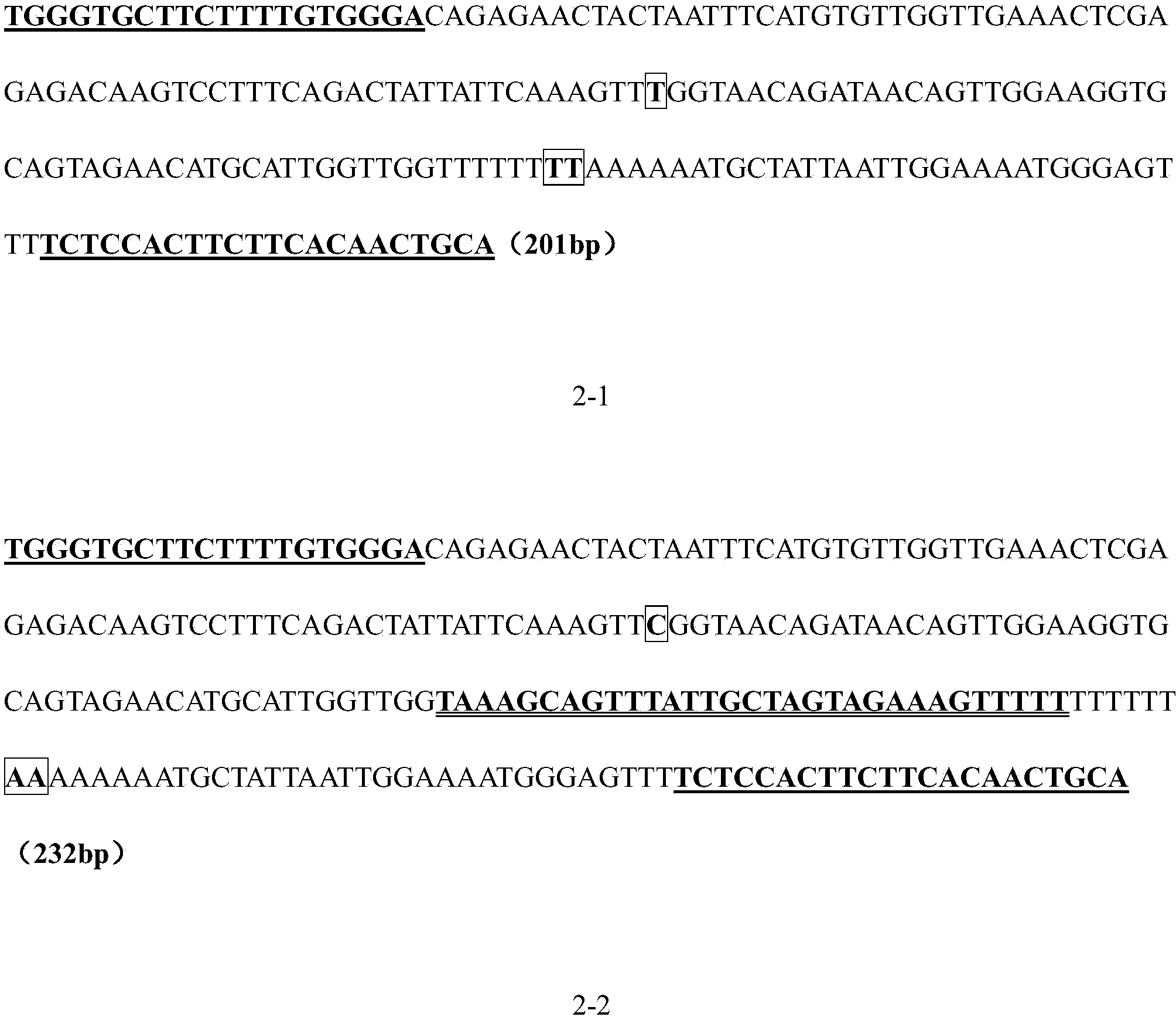Rice leaf width molecular marker FLW-7 and application thereof
A technology of FLW-7 and molecular markers, which is applied in the field of agricultural biotechnology engineering, can solve the problems of affecting the development and distribution of vascular tissues, the decline of auxin polar transport capacity, etc., to overcome the long time period, improve efficiency, and increase the number of leaves The effect of width
- Summary
- Abstract
- Description
- Claims
- Application Information
AI Technical Summary
Problems solved by technology
Method used
Image
Examples
Embodiment 1
[0060] Example 1. Using STS marker FLW-7 to identify polymorphisms of rice leaf width Peiai 64S and broad-leaved indica rice 93-11
[0061] The specific method is: select the rice materials Peiai 64S and Kuanye 93-11 from the germplasm resource bank of the China Rice Research Institute, and use the hybridization of Peiai 64S and Kuanye 93-11 to obtain the F1, and use the primer FLW-7 to identify its multiple attitude ( figure 1 ).
[0062] 1. DNA extraction
[0063] 1) Prepare DNA extraction buffer:
[0064] Add 1 volume of DNA extraction solution (0.35M sorbitol; 0.1M Tris, pH8.2; 0.005M EDTA; the rest is water), 1 volume of nuclear lysis solution (0.2M Tris, pH7.5; 0.05M EDTA ; 2M NaCl; 0.055M CTAB; the rest is water) and 0.4 volume of 5% (mass concentration) sarkosyl solution (i.e. the aqueous solution of sodium lauryl-N-methylglycinate); finally add sodium bisulfite to prepare DNA Extraction buffer; final concentration of sodium bisulfite in DNA extraction buffer is 0....
Embodiment 2
[0084] Example 2. Using STS molecular marker FLW-7 to identify sequence differences between the narrow-leaf variety Peiai 64S and the broad-leaf indica rice 93-11
[0085] The specific method is: use the STS molecular marker FLW-7 to perform PCR amplification on the genomic DNA of Peiai 64S and 93-11, entrust Shanghai Yingjun Biotechnology Co., Ltd. to sequence the amplified products, and compare the differences in their sequences ( figure 2 ).
[0086] 1. DNA extraction
[0087] With embodiment 1.
[0088] 2. PCR amplification
[0089] With embodiment 1.
[0090] 3. Recovery of PCR products
[0091] The recovery of PCR products was carried out by using the PCR product recovery kit (spin column type, catalog number: DP1403) developed by Beijing Biotek Biotechnology Co., Ltd., according to the requirements of the product instructions, and the recovered PCR products were entrusted to Shanghai Yingjun Biotechnology Co., Ltd. for sequencing .
[0092] according to figure ...
Embodiment 3
[0093] Example 3. Using the STS marker FLW-7 to carry out assisted selection breeding of broad-leaf rice
[0094] The specific method is: the wide-leaf donor parent variety 93-11 and the narrow-leaf parent Pei'ai 64S are sequentially crossed, backcrossed and selfed, and the resulting progeny is assisted with the molecular marker FLW-7, and the band type and 93-11 single plant with the same belt pattern was used for breeding improvement.
[0095] 1. DNA extraction
[0096] With embodiment 1.
[0097] 2. STS marker detection
[0098] 1), PCR amplification
[0099] Same as Step 2 of Example 1.
[0100] 2), electrophoresis detection
[0101] Same as Step 3 of Example 1.
[0102] 3. STS molecular marker FLW-7 for assisted selection breeding of rice leaf shape
[0103] The wide-leaf donor parent indica rice variety 93-11 was crossed, backcrossed and selfed with the narrow-leaf variety Pei'ai 64S, combined with the assisted selection of the molecular marker FLW-7, and the band...
PUM
 Login to View More
Login to View More Abstract
Description
Claims
Application Information
 Login to View More
Login to View More - R&D
- Intellectual Property
- Life Sciences
- Materials
- Tech Scout
- Unparalleled Data Quality
- Higher Quality Content
- 60% Fewer Hallucinations
Browse by: Latest US Patents, China's latest patents, Technical Efficacy Thesaurus, Application Domain, Technology Topic, Popular Technical Reports.
© 2025 PatSnap. All rights reserved.Legal|Privacy policy|Modern Slavery Act Transparency Statement|Sitemap|About US| Contact US: help@patsnap.com



